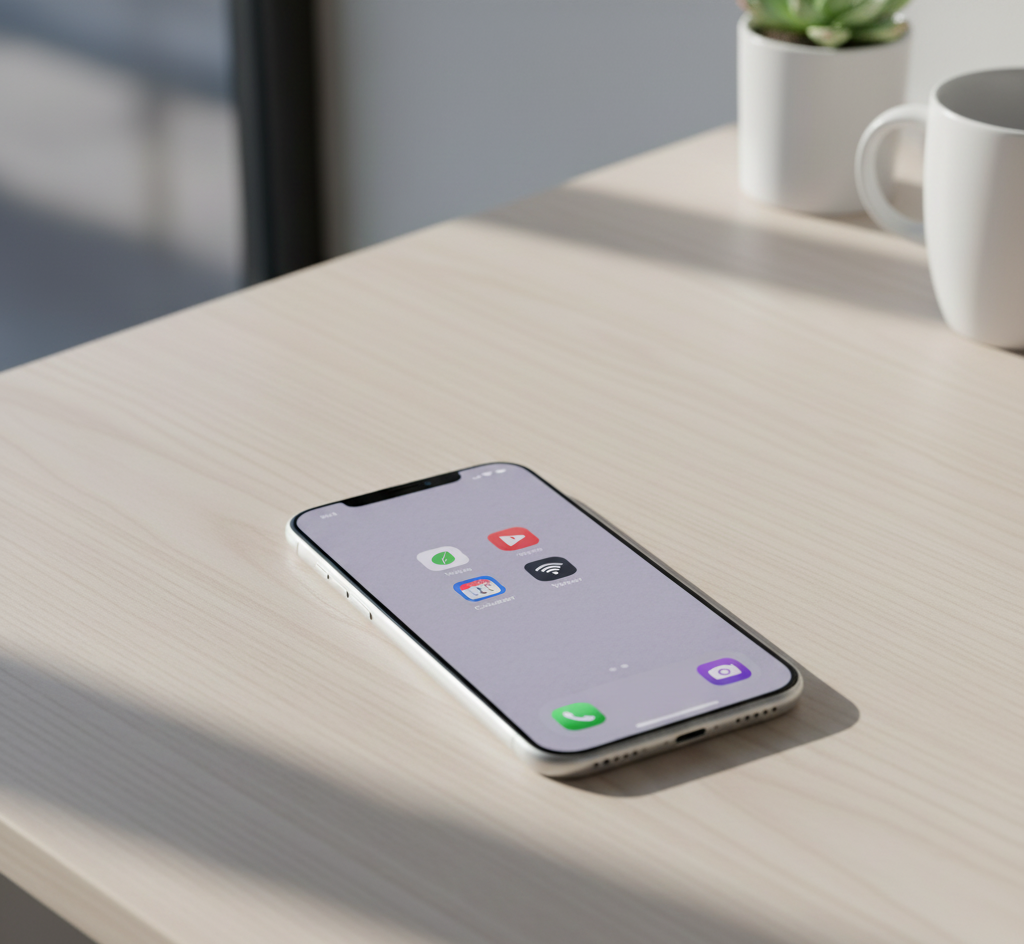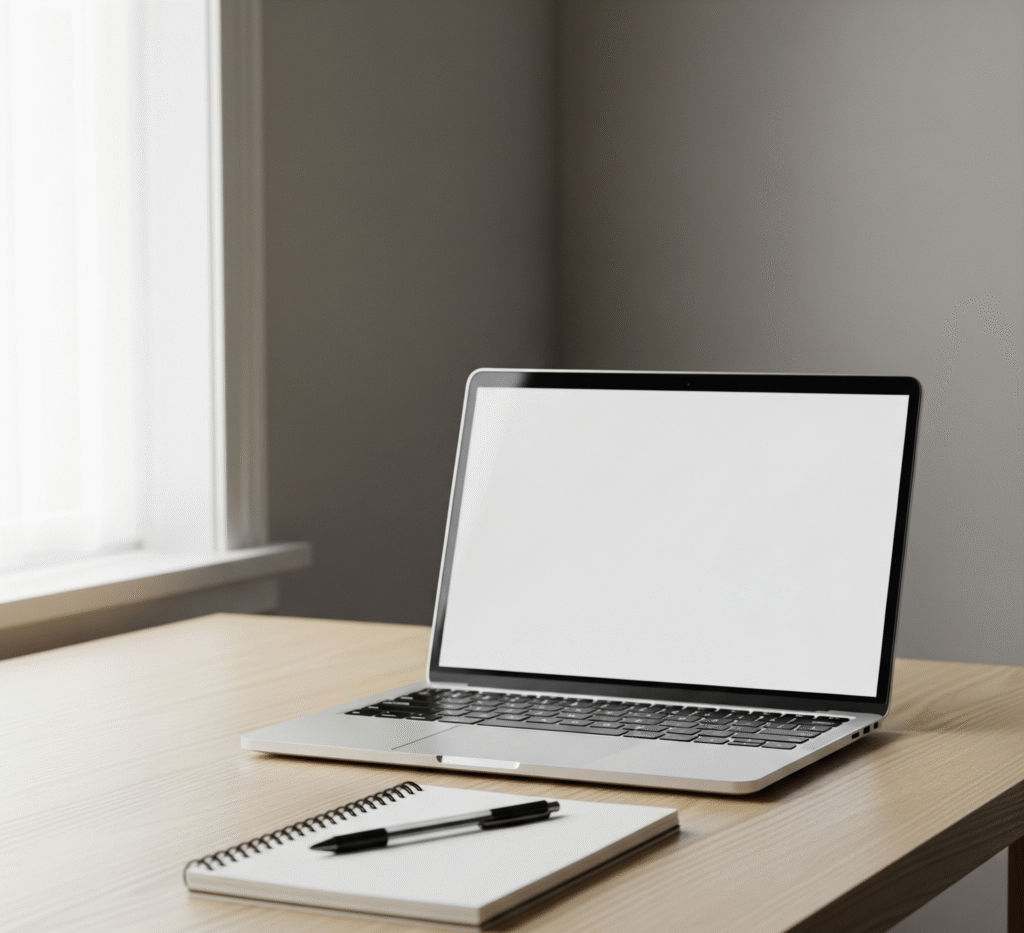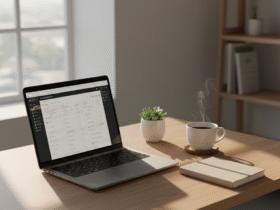When was the last time you felt truly calm opening your phone or computer? For many of us, the moment we tap a screen, we dive into a thicket of notifications, file chaos, forgotten apps, and more. It’s draining, and it steals focus before we’ve even begun.
I used to believe decluttering was a one-time purge. But real clarity comes when you follow a repeatable, consistent process. Over time, I developed a digital declutter checklist to maintain calm in my digital life.
In this post, I’ll walk you through a practical, step-by-step checklist you can follow today to clean, simplify, and restore order to your digital world. Let’s turn overwhelm into ease.
Step 1: Clean Up Your Home Screen & Apps
Your phone or tablet home screen is your gateway. If it’s messy, your brain will feel messy too.
- Remove unused apps. If you haven’t opened an app in 30+ days, consider deleting or archiving it.
- Group apps by purpose (e.g. “Focus,” “Read/Watch,” “Social”), but keep groups minimal.
- Move non-essential apps to “app library” or second page.
I once removed 42 apps from my phone. The extra swipes I saved in a week gave me mental breathing room I didn’t expect.
Key takeaway: Your home screen should be a calm map, not a maze.
Step 2: Inbox & Email Cleanup

Email often becomes digital clutter’s headquarters. Here’s your checklist:
- Unsubscribe ruthlessly from newsletters you no longer read (tools like Unroll.Me help).
- Archive or delete backlogged emails older than a year (unless needed).
- Create filters or rules to sort new email automatically.
- Use a simple folder/tag system (e.g. “Action,” “Waiting,” “Archive”).
Key takeaway: Inbox zero isn’t perfection—it’s freedom.
Step 3: File System & Folder Organization
Your digital documents should be easy to find—never a puzzle.
- Start with a minimalist folder structure: e.g. Work, Personal, Archive.
- Move old files to “Archive” monthly.
- Rename files with clear, consistent naming (e.g. “2025-05_ProjectProposal_v2.pdf”).
- Use cloud sync (Google Drive, Dropbox) so your files are accessible and backed up.
Pro tip: Use a “TO BE SORTED” folder as a temporary inbox for files — every week, process it.
Step 4: Photo & Media Declutter
Photos, screenshots, and videos pile up fast.
- Delete duplicates or blurry photos.
- Archive older years to external or cloud storage.
- Clean your screenshot folder weekly.
- Unsubscribe from auto-save (if on) for apps like WhatsApp or social media.
Key takeaway: Your gallery should reflect life’s highlights, not digital noise.
Step 5: Notification & App Permission Audit

Notifications are constant tugging on your attention.
- Review app permissions: which apps can send you push notifications? Turn off non-critical ones.
- Use “Do Not Disturb” or focus modes during work hours.
- Disable badge notifications where possible.
- Limit background app refresh for apps that don’t need it.
Key takeaway: Silence is a powerful tool in decluttering.
Step 6: Simplify Browser & Tabs
Your web browser often becomes an under-recognized clutter zone.
- Close all tabs — reopen only the ones you need.
- Use bookmarks or tab groups instead of leaving tabs open.
- Clean your browser bookmarks: delete dead or unused links.
- Clear cache and browsing history monthly to reduce bloat.
I clicked “restore tabs” once and the 50-tab chaos returned. Now I return to just 3–4 tabs I truly need.
Step 7: Audit Your Tools & Subscriptions
Finally, ensure your digital tools serve you, not rule you.
- List all paid subscriptions (apps, cloud, software). Cancel what you don’t use.
- Review free apps too — are they still bringing value?
- Consolidate overlapping tools (e.g. two note apps, two task managers).
- Check integrations: ensure your tools talk to each other rather than duplicate effort.
Key takeaway: Simplify your toolkit to regain energy and clarity.
How to Maintain Digital Declutter

Decluttering isn’t a one-off task; it’s a mindset.
- Daily: Quick cleanup of 5 minutes (delete, sort, archive).
- Weekly: Run through the above checklist briefly.
- Monthly: Deep audit — tools, files, notifications.
Over time, these small steps compound into a digital world that feels calm rather than chaotic.
Conclusion
This digital declutter checklist offers you simple, actionable steps to reclaim your digital life: home screen, email, files, media, notifications, browser, and tools.
By following it, you’ll free your attention, reduce stress, and build systems that support your flow—not fight it.
If you want to pair this with focused learning techniques, check out my article “Study Methods for Adults”. That combination—clarity in your devices plus clarity in your mind—makes all the difference.
Try one last step today: pick one section from this checklist and declutter it. It’s a small win that nudges the rest into place.





